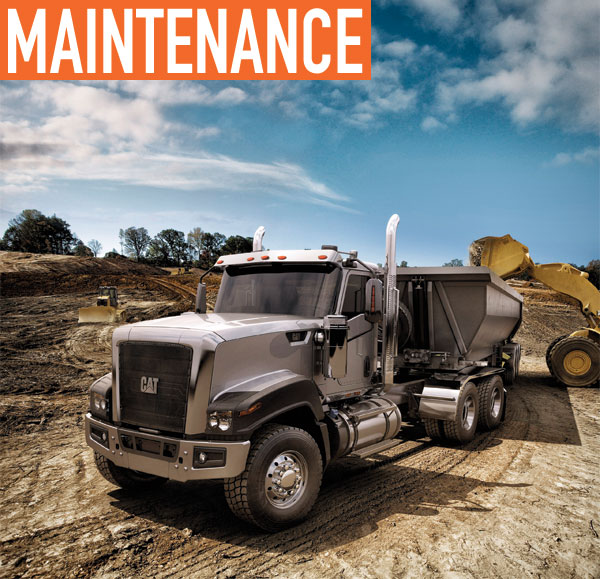Every year, the price of tires increases operating costs. For example, in 2013, the average cost of a new replacement tire increased significantly—10 percent compared to 2012 and 22 percent from 2011, according to an annual fleet maintenance survey conducted by GE Capital Fleet Services.
Whether your vehicle averages 100 miles in a day or 1,000, it’s your tires that take most of the wear and tear. We all know the importance of proper tire inflation, but just as vital is addressing issues such as vibrations or the vehicle pulling to one side or another, which often can be solved with proper wheel alignment or tire balance.
It’s important to understand the difference between the two, and why both are essential to improve the service life of the tires and the safety of your trucks.
WHEEL ALIGNMENT FACTS
The purpose of a wheel alignment is to maximize tire life and ensure the vehicle drives straight, true, and performs as designed by the manufacturer. Checking tires for uneven wear patterns is one way to determine if an alignment is needed, although tread edge wear may not always indicate this to be true. The tread on an over-inflated tire will be deeper on the edges than in the center. If the tire is under-inflated, its tread will be deeper in the center than at the edges. Uneven wear is also evident when the tread is deeper on one side than the other.
Another indication of an out-of-alignment condition is a vehicle that continuously drifts or pulls to one side of the road, putting a strain on the driver’s hand. A vehicle should maintain a straight line in motion without constant steering corrections. A pull or drift may or may not contribute to premature tire wear, but should be investigated as to why the condition is happening. Note that letting go of the steering wheel is not a proper test for a pull; the vehicle will eventually favor a drift to one side due to road crown … not to mention it’s unsafe.
The best type of wheel alignment is four-wheel alignment. Many vehicles today have adjustable rear alignment settings, but even for vehicles without adjustments in the rear, a four-wheel alignment will allow the technician to identify any rear tracking problems and compensate for them with adjustments to the front.
Once complete, it’s important to request before and after readings of the alignment to see how bad it was off and to ensure alignment angles are within specification. The vehicle should also be driven to ensure the steer head is correct. If one of your drivers notices a problem, it could call for fine-turning the alignment settings.
A properly aligned vehicle will have improved handling, especially in inclement weather, allowing the tires to gain maximum traction on slippery surfaces like rain, sleet, or snow. It can also reduce wear on the steering column and other components of the vehicle. You’ll also get better fuel economy with a proper alignment, and it will maximize the life of the tire—saving you money.
Since many commercial vehicles are loaded with an assortment of equipment and tools, it’s critical that the alignment is done with the average amount of weight in the vehicle. If the alignment is performed while the vehicle is empty, it will affect the alignment angles.
BALANCING ACT
Out-of-balance tires will cause a vehicle to vibrate at certain speeds, usually between 50-70 mph. This happens when one section of the tire is heavier than the other. Even one ounce of imbalance on a front tire is enough to cause a noticeable vibration in the steering wheel at about 60 mph.
To balance a wheel, the technician will mount it on a balancing machine, which spins the wheel to locate the heavier part. To compensate for the heavy part, the technician will attach a lead weight on the opposite side. On most fleet vehicles, there should be a wheel weight present on the inside and outside of the wheel.
Most high-quality tires will hold their balance and gradually deteriorate. However, if a vibration is noticed that wasn’t there previously, it is possible that one of the lead balancing weights fell off. A vibration mostly in the steering wheel is a good indication that the problem is most likely in a front wheel. Conversely, if the vibration is mostly in the seat, the problem is likely in the rear.
Similar to an alignment, balanced tires will provide a smooth ride and extend the life of the tires.
GETTING INTO A ROUTINE
Depending on the job, work trucks can experience a variety of terrain and road surfaces. Hitting just one pothole can throw off the vehicle’s alignment. Similarly, the variety of road surfaces often result in the accumulation of debris, mud, ice, and snow in the wheel, which can affect tire balance.
To keep vehicles and tires operating at optimum performance, have your alignment and tire balance checked on your fleet vehicles at least once a year. Although an alignment adjustment or wheel balance may been seen as an unnecessary expense, replacing worn tires will often exceed the cost of tire maintenance.
ABOUT THE AUTHOR:
Leroy Alvarez is the owner of Nuts & Threads and has more than seven years of experience in the automotive industry. For more information, visit www.nutsandthreads.com.
__________________________________________________________________________
MODERN WORKTRUCK SOLUTIONS: Preview Issue
Did you enjoy this article?
Subscribe to the FREE Digital Edition of Modern WorkTruck Solutions magazine.
![]()




